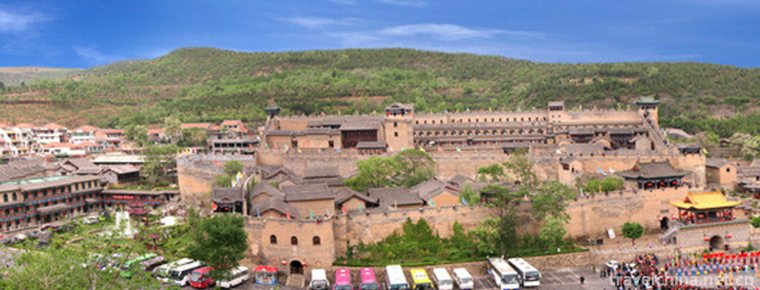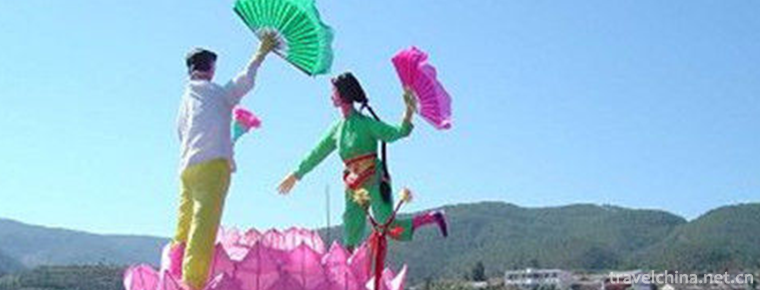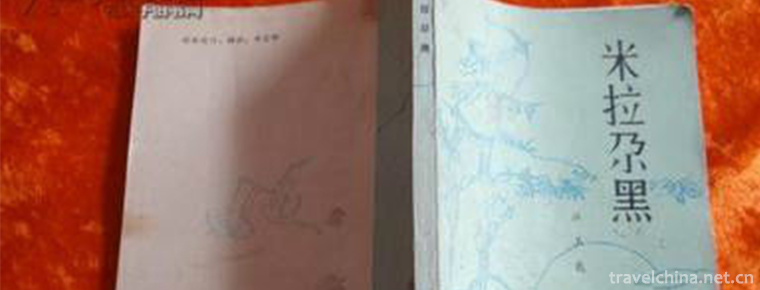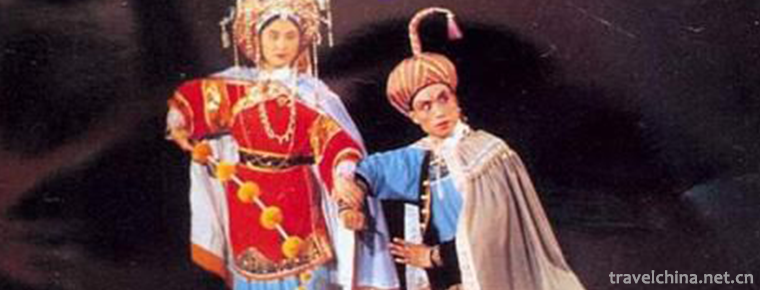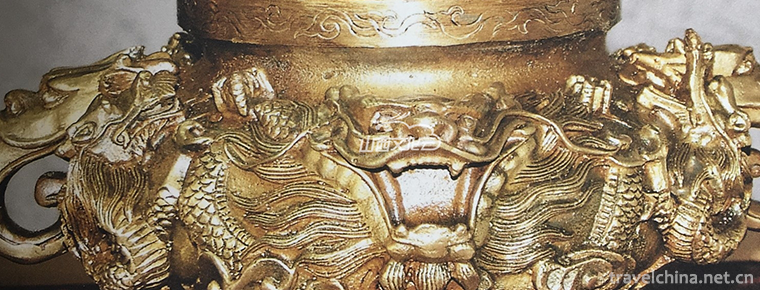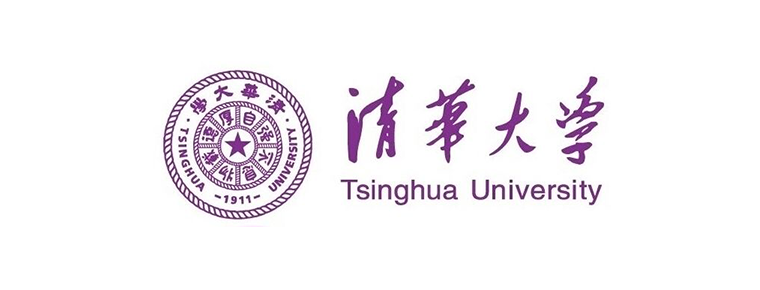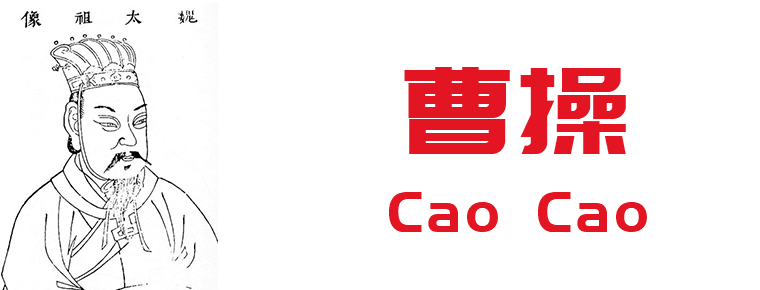Production Techniques of Mongolian Lele Car
Production Techniques of Mongolian Lele Car
Mongolian Lele car making skills, the local traditional handicraft in Arukeerqin Banner, Inner Mongolia Autonomous Region, one of the national intangible cultural heritage.
Lele cart is a cattle cart in Mongolian area, also known as roller cart. Its origin can be traced back to the "Yuan Yuan" recorded in Han Shu. As far back as the Qin and Han Dynasties, the Huns had learned how to build cars. The Rollers in the third century AD were more famous for making cars.
On May 20, 2006, the production skills of Mongolian Lele cars were approved by the State Council and listed in the first batch of national intangible cultural heritage list, project number_-46.
historical origin
Lele car has a long history, its origin has been unable to verify. According to the records of ancient books of Han Dynasty, it can be seen that during Qin and Han Dynasty, the Huns living in the northern grassland area had mastered the car-making technology.
The origin of the record of Lele Che can be traced back to the divergence recorded in Han Shu. By the Northern and Southern Dynasties, Xianbei, Rouran, Tieler and other nationalities living in the northern grassland area had advanced car-making technology.
In the Northern Dynasty, the Tielers were famous for making cars. They built cars with high wheels and many spokes, which were more suitable for grassland environment. For this reason, they were called "Gaocheren" in historical books.
During the Liao Dynasty, the Mongolian automobile making technology was already developed, and the automobiles they made were widely used in nomadic life. There are many rock paintings of cars carved on the cliffs of several high Hellestai Mountains in Urat Central Banner.
Technological characteristics
The principle of making Le-Le car is local material, simple production and convenient disassembly and assembly. Technically speaking, the manufacturing process of Le-Le car is not too complicated
Lele car is a herdsman's mobile home. Its characteristics are large wheels, small body, simple structure and easy to use. It is suitable for running in grassland, snow, swamp and desert areas. It can carry hundreds of kilograms of load, such as bull-pull, horse-pull and camel-pull.
Because the snow is deeper than knee in winter, grass is deeper in summer, swamps are more, and the wheels of the car are tall, the car made by this way is light and flexible, short, big, not easy to topple, and can be handled well. It moves freely on swamps, grasslands and barren beaches with undeveloped traffic and is well adapted to the local mountain and gully terrain.
The birch trees commonly used in grasslands are used as raw materials to make Lele cars. These trees mostly grow in the mountain areas of pastoral areas. Axles, wheels, tiles, spokes, wheel centers, roofs, frame, mostly made of birch, but also made of pine, willow, elm, oak, camphor wood, etc. Birch wood is hard in texture, resistant to bumping, light in body, not easily deformed by dampness. It is suitable for traveling on grasslands and beaches.
It is simple in structure and easy to manufacture and repair.
Technological process
The process of making Le Le Car includes the following procedures:
Material selection
The hub, spoke, vehicle, axle, shafts and other parts of Lele car need to use harder wood such as birch and elm, while the other parts of the body require lower hardness of wood and can use general wood. Hubs, spokes, vehicles, axles and shafts are the key components, which require wear resistance, compression resistance and fracture resistance. The damage of any one of their components will lead to the vehicle can not be used, and repair is more troublesome. Therefore, it is required to select hard wood, especially the hardness and resistance to damage and fracture of axles. Mongolian people are very taboo about axle fracture, which is regarded as a bad omen. Birch was used as the material in the traditional lorry. Later, with the decrease of birch, some non-key parts were replaced by other softer wood.
Drying Dehydration and Processing Preparations
After the wood is selected, it will be dried and dehydrated twice. The first is to put the logs felled for a period of time to let them air-dry naturally, and then process the various parts of the Leler truck, first to produce a rough shape, and then put them in the drying room for drying and dehydration treatment, which usually takes about two weeks. After the blank is thoroughly dried, the forming parts of the crane are processed and manufactured. All parts must be pre-fabricated. The processing of hub requires high precision.
assembling
The main technological process includes wheel assembly, wheel and axle assembly, body assembly. Wheel assembly is the key. It is very skillful, complex and requires high technology. It is difficult for inexperienced workers to assemble to meet the requirements. Its technological process is that the hub and spoke are assembled together first, and the accuracy requirement is constantly checked and revised in the assembly process, especially to ensure that the spoke and hub are vertical, the spoke are equidistant and the spoke is in the center of the hub. The assembly of vehicles and spokes is quite difficult, and it is very difficult for inexperienced workers to do so.
Decoration and appearance protection
After the whole car is assembled, decoration and protection processes such as painting iron bearing bushes, five-star nails and decoration of car appearance are carried out.
In technology, there are coaxiality calibration, vertical calibration, flatness calibration, mortise structure, mortise insertion, interference fit and so on. Tools, in addition to common woodworking tools, there are special brackets, alignment tools, fixtures and so on.
Inheritance and Protection
Inheritance value
As a representative of Mongolian civilization, Lele Che has played a very important role in the development history of Mongolian. It has immeasurable mining and development value. From the decorative value of Lele car, any structure of Lele car can be used as a landmark embellishment in interior decoration with Mongolian culture as the keynote. Moreover, it can create a unique artistic realm. Outdoors, parked in a proper position, then, it is a typical symbol of nomadic culture, the specific display of Mongolian customs, if the car is bolted with cattle or horses, and next to a dog, that is the vivid natural beauty of Mongolian culture. As a manifestation of Mongolian unique culture, the use of Le Che in the square landscape can make people witness the elegance of this ancient civilization product, but also reflects the characteristics of Mongolian culture. Le Le Che strongly reflects the cultural charm of the Mongolian people, echoes the square as a whole, and tells about the national culture and history with a long history.
Current situation of inheritance
With the development of economy and the progress of society, Le-Le-Car has gradually withdrawn from the historical stage, replaced by motorcycles, cars and other modern means of transportation. Besides the use of herdsmen in a few remote areas, Le-Le-Car has been difficult to see in the grasslands from the late 20th century to the early 21st century. Most of the artists who have mastered the craftsmanship of Le Le Car are old and have few successors. This traditional craftsmanship needs to be rescued and protected urgently. Dongwu Banner is located in the hinterland of Xilinguole grassland, one of the four grasslands. There are a certain number of Le Che, and the types are quite complete. It has the conditions to protect the production skills of Le Che.
Heritage figures
Bai Yin Chagan, male, July 1939. In June 2009, Bai Yinchagan was selected as the representative successor of the third batch of state-level intangible cultural heritage projects and declared the Arukherqin Banner in Chifeng City, Inner Mongolia Autonomous Region. Project Name: Mongolian Lele car making skills.
protective measures
Bai Yin Chagan received two apprentices and passed on the Mongolian craftsmanship to the two apprentices. The two apprentices have learned this technology and can make the craftsmanship of the craftsmanship of the craftsmanship of the craftsmanship of the craftsmanship of the craftsmanship of the craftsmanship.
On April 25, 2007, the People's Bank of China will issue commemorative coins for the 60th anniversary of the founding of Inner Mongolia Autonomous Region. The wheel pattern of Mongolian Lele car is printed on the positive pattern of the commemorative coins.
In 2017, Inner Mongolia Agricultural University and Inner Mongolia Exhibition Hall organized more than 120 training sessions on Mongolian embroidery, felt embroidery and yurts, Lehrer cart, harness, camel furniture and furniture making techniques to effectively enhance the cultural literacy, aesthetic ability and innovation ability of the inheritance population.
social influence
Important Exhibitions
On June 9, 2018, the eighth Xilingol League intangible cultural heritage protection exhibition was solemnly held in the Right Banner of Sunite, and the production skills of Mongolian Le Car were displayed in the exhibition; On September 6, the same year, the "Dawn of Grassland Civilization - Xilinghot Yutang Grassland Stone Exhibition" was held in the first floor exhibition area of the League Museum, and the production skills of Mongolian Le Car were displayed in the exhibition.


-
Royal Prime Ministers Palace
Huangcheng Xiangfu (National AAAAA Scenic Area) is located in Beiliu Town, Yangcheng County, Jincheng City, Shanxi Province..
Views: 145 Time 2018-11-24 -
Wan fo Lake Scenic Area
Wanfo Lake is located in Shucheng County, central Anhui Province. It is a national AAAAA tourist area..
Views: 243 Time 2018-12-08 -
Midu folk songs
"Midu Folk Song" is the general name of the Han and minority folk songs in Midu County, Yunnan Province. Midu folk song is a multi-cultural complex system, which is the convergence and cohes.
Views: 126 Time 2019-06-04 -
Mira Gahei Mile La Ga Hei
Mira Gahei, Dongxiang folk tale. Also known as "Moonlight Mirror". Among the Dongxiang people, there are also poem-style stories of "Mira'er Hei", which are intermingled in rhyme a.
Views: 104 Time 2019-06-04 -
Construction Techniques of Traditional Residential Buildings in Southern Fujian
South Fujian residential building technology is a unique traditional architectural technology originating in Quanzhou, which began in Tang and Five Dynasties, is the mainstream of ancient architectura.
Views: 154 Time 2019-06-05 -
Guizhou opera
Guizhou Opera is one of the local operas popular in Guizhou Province. It evolved and developed from the opera Yangqin (also known as "Wenqin", "Guizhou Playing Ci") .
Views: 150 Time 2019-06-10 -
Cross stitch
Flower picking, a kind of drawing work, also refers to a needle method of embroidery, Chinese folk traditional handicraft. Also known as "pick weave", "cross embroidery", "cro.
Views: 230 Time 2019-06-21 -
Bronze Ware Making Skills Datong Copper Ware Making Skills
Datong bronze ware is a traditional handicraft of the Han nationality. It has a long history and exquisite craftsmanship. As early as the Northern Wei Dynasty, it enjoyed a great reputation. Since the.
Views: 145 Time 2019-06-21 -
Tsinghua University
The campus of Tsinghua University is situated in northwest Beijing on the site of the former imperial gardens of the Qing Dynasty, and surrounded by a number of historical sites..
Views: 185 Time 2019-08-31 -
Cao Cao
Wei Wu Di Cao Cao (155 years - 220 March 15th), the name is Geely, the word Meng De, nicknamed hide. Prefectural governor of Yuzhou Qiao (today) Anhui Bozhou Person . Eastern Han Dynasty Outstanding i.
Views: 379 Time 2019-09-07 -
Beijing University of Posts and Telecommunications
More than sixty years of wind and rain, more than sixty years of spring and autumn fruits. In the north of Mingguang and the south of Jimen, the ancient city walls witness the ever-lasting radio waves.
Views: 115 Time 2019-09-22 -
Leshan science and technology
By the end of 2018, Leshan had 12 provincial engineering technology research centers and 33 municipal engineering technology research centers. There are 83 high-tech enterprises and 353 Municipal Science and technology enterprises. There are .
Views: 175 Time 2020-12-17
